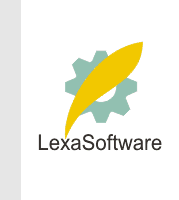Filmscanners mailing list archive (filmscanners@halftone.co.uk)
[Date Prev][Date Next][Thread Prev][Thread Next][Date Index][Thread Index]
[filmscanners] Re: Pixels and Prints
Now wait a minute here...
If I am not mistaken in one case you are taking a 900 x 900 pixel sample
from a 3000 x 2000 pixel (approximately) dimensioned image. In the
other case, you are taking the same 900 x 900 pixel section from a 5080
x 5080 (or there about) pixel image, which is considerably less total
image information.
If you are saying on a pixel per pixel basis (excluding resolution of
the total image) that the Bayer patterned digicam image looks cleaner
and "better" than the translated dye cloud (film) to squared pixels by
scanning, then you'll get no argument from me. The digicam image is
"designed" for the square pixelled format, and the translation takes
place at the point the light hits the sensor, rather than going through
the whole translation process, going from light, to photon chemical
reactions to more (liquid) chemical reactions on randomly sized and
positioned "dots" (grain/dye clouds) then reformatted to fit square
pixels. So you'll get no argument from me there.
The Bayer patterned image doesn't have the accuracy of color the film
will (at the same resolution) and the film is obviously still resolution
superior, even after scanning.
Yes, once the digital cameras provide 4000 or 5000 ppi resolution, no
question, it will look better (even if the color still won't be as
accurate), but I think it's a way off financially. A decent film camera
and some quality film still is a bit more affordable than 24 megapixel
sensored digicams.
Art
David J. Littleboy wrote:
> "Austin Franklin" <austin@darkroom.com> writes:
>
>>Then there's the reality check of actually looking at film scans and
>>actually looking at some digital camera images and seeing how
>>they compare.
>>
>>If one actually did that, one would see that, on a pixel-for-pixel basis
>>(that is, comparing the same number of pixels), film scans are incredibly
>>poor, being soft and noisy. As I mentioned before, downsampling 4000 dpi
>>scans of Fuji "100F" slides to 60% results in images that are beginning to
>>be similar quality to digital camera originals.
>
>
> That depends on a LOT of things. The film, the development and the scanner.
> I have seen extreme differences between high end film, excellent
> exposure/development and using a very good scanner...much less a high end
> scanner...vs...most decent films scanned on a con/prosumer based scanner.
>
> I have compared scans from my scanner (Leaf45, which scans 35mm at 5080) and
> different digital cameras (Leaf Lumina, which is a TRUE RGB digital camera
> in that it gives %100 of the color information per pixel...as well as D30,
> D60, Hasselblad digital backs etc. The ONLY digital cameras that come close
> to my best film scans are the 7k x 7k Hasselblad scanning back (which
> actually beats most film, but is useless in the real world only in the
> studio) and the Lumina comes close, but not quite (which is a 2k x 3k
> scanning camera).
> <<<<<<<<<<<<<<<
>
> I think you've misunderstood what I've said. Take a 900 x 900 pixel crop
> from your 5080 dpi scan and print it at 3x3 inches. Take a 900x900 crop from
> a 10D image and print it at 3x3 inches. Which looks better?
>
> Since that's a 16x enlargement from film, it's going to look pretty poor.
> But 10D images look very good printed at 300 dpi.
>
> So the argument that scanned pixels are, on an individual basis, in any way
> better than 10D pixels, strikes me as seriously problematic.
>
> David J. Littleboy
> davidjl@gol.com
> Tokyo, Japan
>
>
>
----------------------------------------------------------------------------------------
Unsubscribe by mail to listserver@halftone.co.uk, with 'unsubscribe
filmscanners'
or 'unsubscribe filmscanners_digest' (as appropriate) in the message title or
body
|

